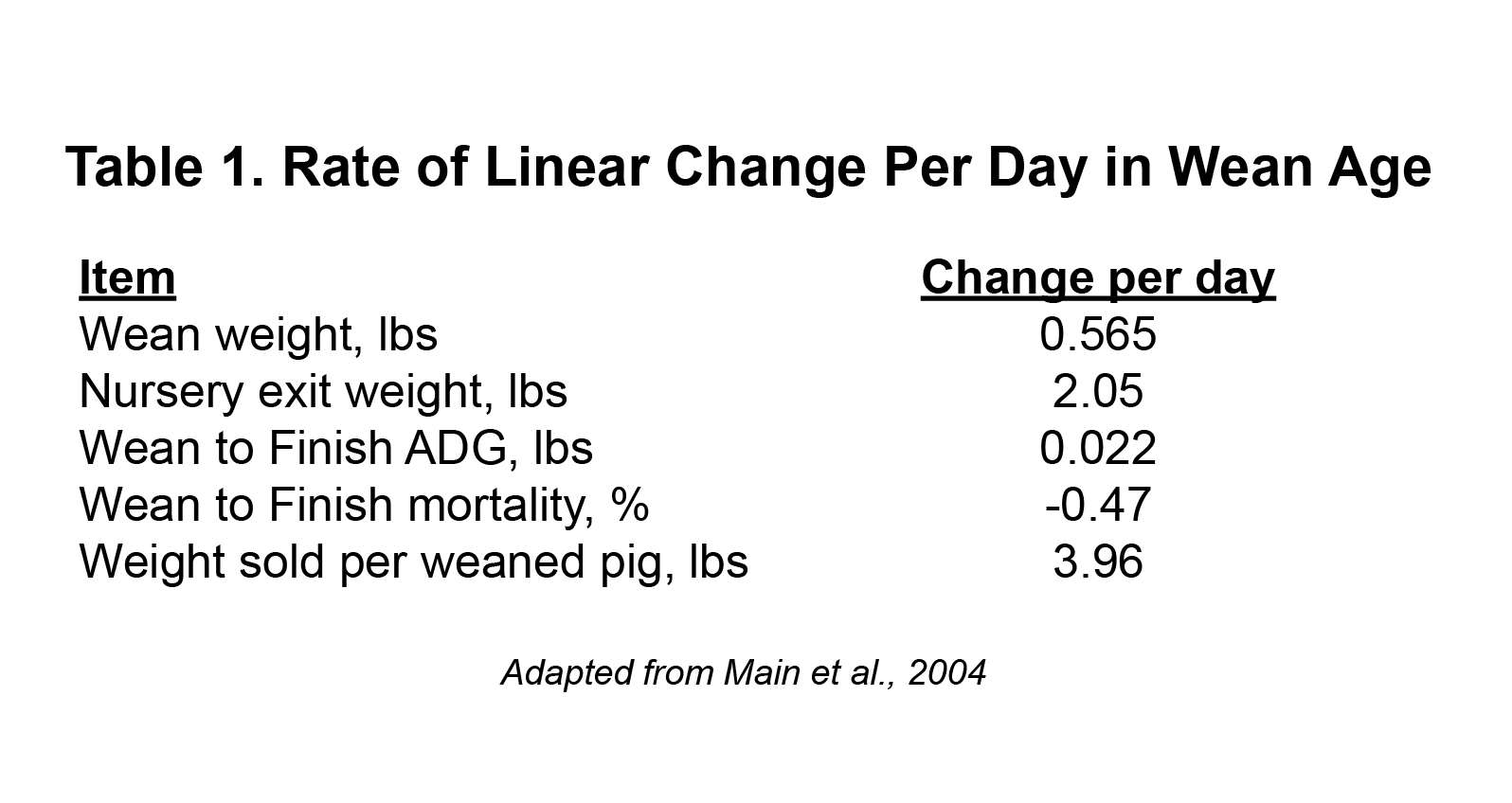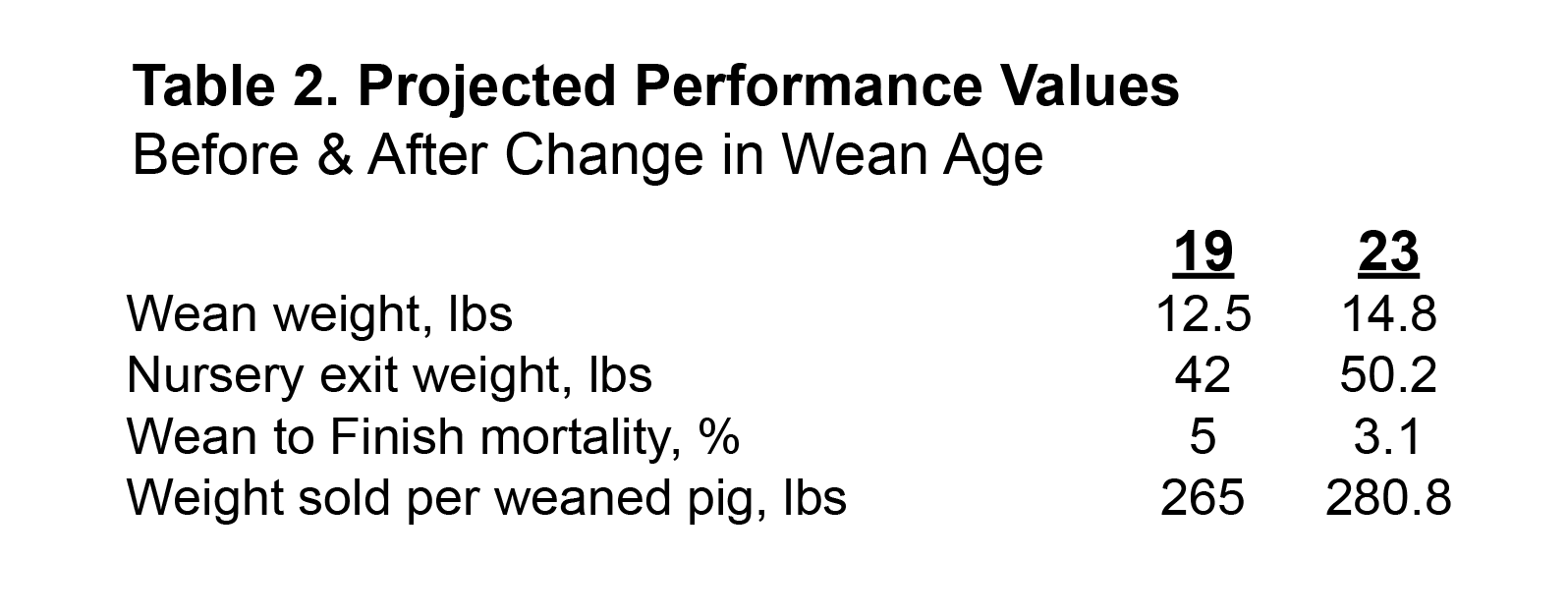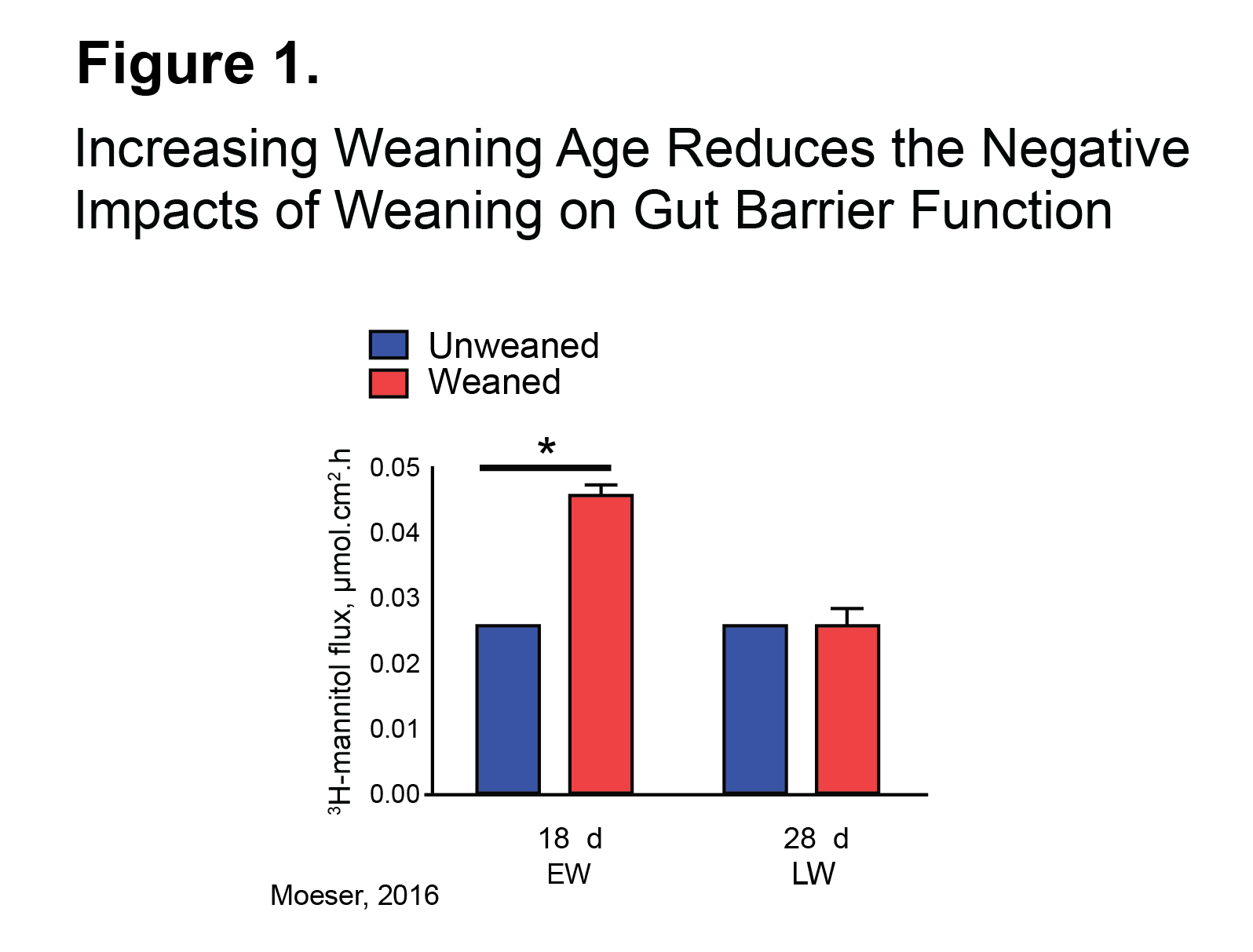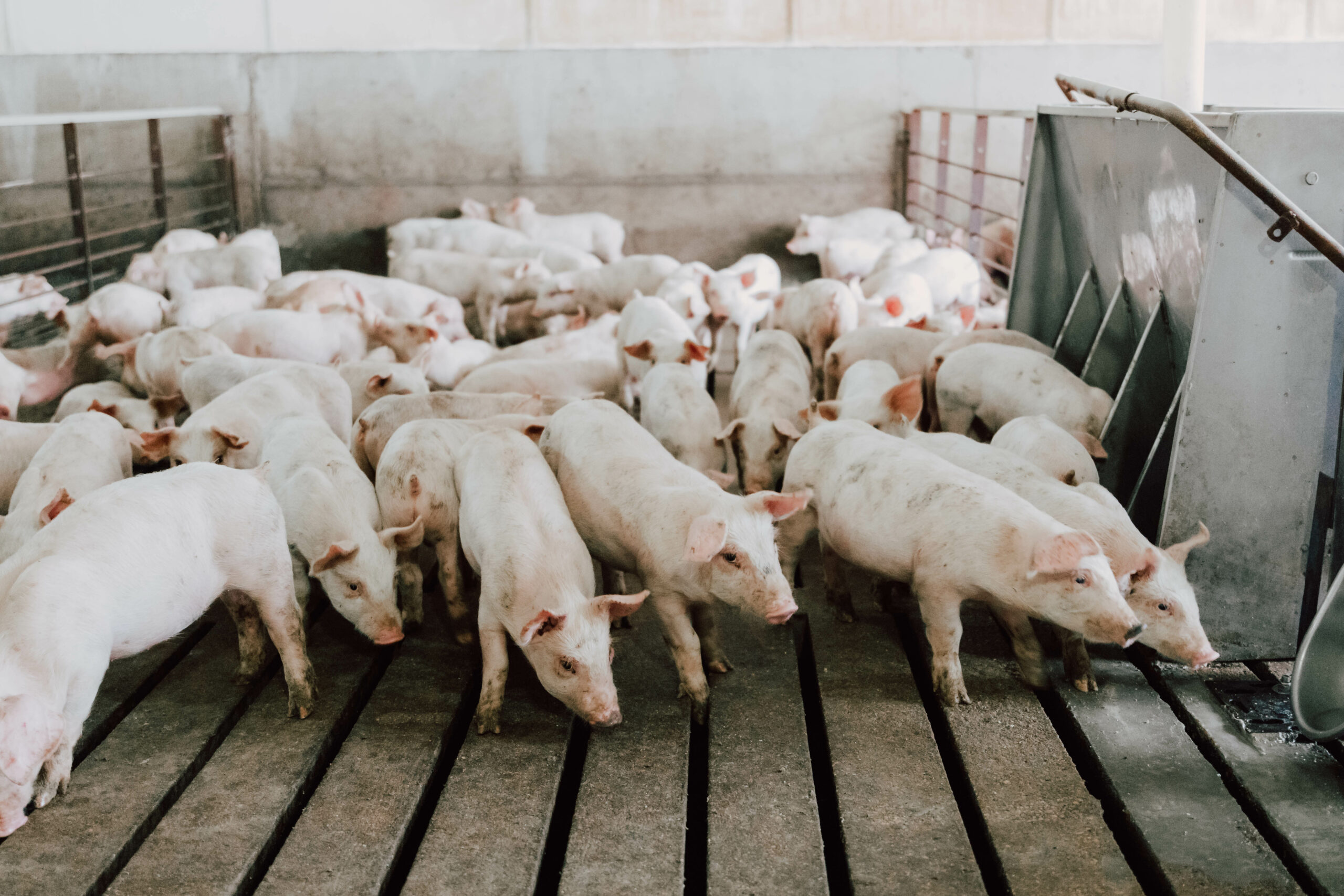Written by: Bart Borg, PhD
Since the early days of multisite swine production becoming a production model that with its implementation brought great improvement to pig production the fine tuning of specific production practices within the model have been under way. Weaning age has always been in flux. Segregated early weaning (SEW) and a focus on full utilization of every “sow day” led to practices in which pigs were weaned at a very young age. Much has been learned about the health advantages associated with removing the pig from the sow at an early age to break some disease cycles but an equally large and important amount has been learned about the difficulties in rearing the very young pig and the benefits of a later wean age.
Foundational research was conducted by Main et. al., (2004) to explore in a large scale, three site production system the impact of wean age on wean to finish performance parameters. Since this time, there has been systematic movement on many farms to work towards increasing wean age. There are many benefits of weaning an older pig if the possibility exists within your operation. Table one shows the rate of change for some important production parameters that were measured and now can be predicted as wean age changes on any particular farm. As you can see by studying the table, an older wean age delivers a heaver pig to the nursery/WF building, provides predictable daily gain improvement and reduced mortality during grow out and so delivers nearly 4 lbs of additional sale weight for every day increase in wean age.

There are many ways to consider gaining additional wean age such as weaning day management on the farm, evaluation of how early sows are loaded into farrowing space, adding additional farrowing space and evaluation of batch farrowing. All come with change of practices and some with capital expenditures. As with any potential change, balancing costs vs return is important. Table 2 provides estimates of differences in grow out parameters if a system moves wean age from 19 to 23 days or increases wean age by 4 days. To calculate these estimates I’ve simply set the base numbers for the 19 day wean and adjusted the values based on the research conclusions shown in table one. In this example you can see how large the performance differences are with a relatively small change in wean age. At the very least, it is worthwhile considering how you can gain some of the benefit on your farm by simply “tightening” things up to extend lactation length as much as possible in your situation.

There has been a lot of research in recent years studying the impact of different stressors on function of the intestinal tract to “protect” the body from the vast array of material that passes through the gut that we are not interested in having absorbed into the body. Studies have shown that many stressors create a “leaky gut” in which some of the harmful compounds in the gut pass into the body. Two of these stressors are heat stress and weaning. Figure 1 shows the passage rate of a compound (mannitol) in pigs that are weaned at either 18 or 28 days of age. The results show that the passage of mannitol is much greater in the 18 day weaned pig as compared to the pig that is more mature at weaning and better able to cope with the stress of weaning. There is much to learn about the gut barrier and impact of stressors but the early evaluation of this, while considering wean age, illustrates the improved gut barrier function of the older weaned pig which can certainly relate to many of the performance improvements noted in grow out.

Older wean age can lead to a change in the methods and products used to provide a good start to the young weaned pig. If you’re interested in exploring more about wean age change on your farm or the feeding/production practice changes, contact your Standard Nutrition Services consultant.
